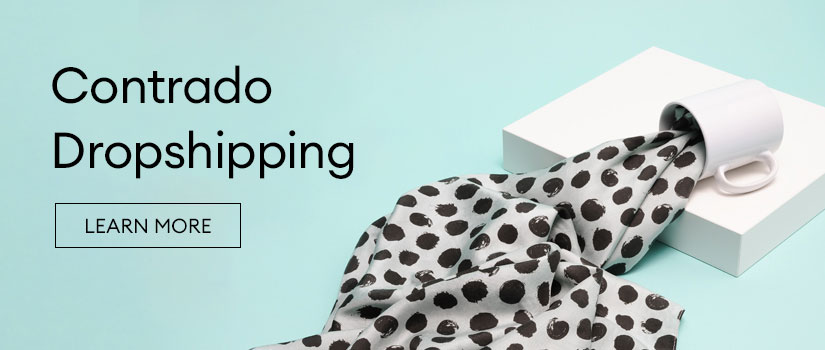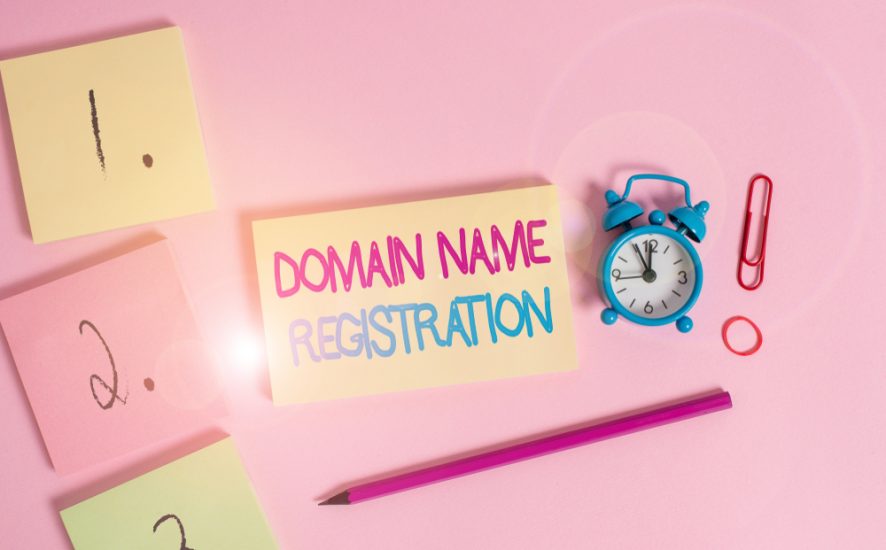Congratulations, you’re at the point in your seller journey where you need to know how to choose a domain name! By this point, you have the art that you’re going to sell, you have a brand name, and you’ve decided that you’re going to create a website for your business. We have a few tricks and tips for choosing a domain name, so buckle up and we’ll get into it.
If you don’t already have a brand name, check out our article on how to come up with a brand name – that’s the best place to start. We can also help you with creating wholesale products to sell on your website, as well as products for dropshipping.
If you do already have a name for your artist brand, choosing a domain name can be just as easy as adding a .com to the end of it. In fact, that’s exactly what you should do if you can. The problem here is that your brand name might not be available as a .com, so that’s where the rest of this article can help.
Tips For Choosing a Domain Name
1. Use .Com If You Can

The .com domain extension is still the most widely used throughout the internet. Fun fact: it stands for commercial! Most people are familiar with this extension and might even assume that a brand has a .com extension even if it doesn’t, because that’s how popular it is. Its popularity makes it the easiest to remember. A .com extension can also give you more domain authority, which will help you rank higher up in Google search results.
If you’re lucky and your brand name is available with a .com extension, then definitely snap it up! This is the easiest approach for you and your customers. If they already know your brand name, they’ll have no trouble finding you online.
If you can’t use .com, try using another top-level domain extension like .net, .org, or .co. Like words, these extensions can have connotations. For instance, .net is often associated with technology services, and .org with non-profits. However, this isn’t a fixed rule, so if you want to use .net but aren’t a tech company, you still have the option.
2. Make it Short
The more characters someone needs to type into the search bar, the more chances there are for them to make a typo. Keeping your domain short cuts down on the room for error. It also helps with linking in the future; for times when you’re posting your link around the internet (like on social media), a shorter link will look cleaner and be able to fit in shorter character limits if necessary.
3. Make it Memorable

This one is a given, but it can also be hard to gauge how memorable something is. A memorable domain is one that has straightforward spelling and doesn’t have unnecessary characters in it. It can be hard for people to recall if a word is spelled differently in your domain, so it’s best to avoid the confusion all together.
4. Stay Away From Numbers
Numbers come in two forms, the numeral and the spelled-out version. That means you’ll always have to specify which one is used in your domain. How many times do you want to say “it’s five, but spelled out f-i-v-e instead of the number 5”? Probably not that many…
5. And From Hyphens
A similar concept applies here. If something is hyphenated, you’ll need to tell them where the hyphen is. Many people also use the word “dash” which can get confusing. Is it the end of the world if your domain has a hyphen? Definitely not, but avoiding them can make your life just a bit easier.
6. Do Your Research

It might sound obvious to check to see if anyone else uses a domain name before you do, especially because if it already exists, you won’t be able to purchase it. In this case, it’s wise to see if there are existing trademarks using the same name. If another brand uses the same name but doesn’t have a website, you could get into hot water in the future.
Do a Google search, then head to the Australian government’s trademark database to be completely sure before you purchase your domain.
7. Consistency is Key
Everything is simpler when your channels are the same. If possible, keep your brand name, social media handles, and domain name the same. It’s familiar and people will always know where to find you.
8. Consider Keywords
If you’re familiar with SEO, you’ll know that keywords are the phrases that best describe the content of a page. They’re also what people type into a search engine (like Google) to find what they’re looking for. You don’t have to use a keyword in your domain – in fact, many websites don’t – but it can be helpful. Since a keyword describes your content, people will know roughly what your business is from your domain name.
An example of this would be if you’re selling loungewear and you use that word in your domain name. If you’ve decided on “Lux” to be the name of your brand, consider making your domain LuxLoungewear.com.
Put Your Art on Your Website
Now that you know how to choose a domain name, it’s time to create your website! Contrado partners with Shopify, where you can create your website and sell your creations. You can purchase your domain right through Shopify, and then install the free Contrado app to seamlessly integrate for dropshipping. Design hundreds of unique products with your art to sell through your very own domain. We offer a wide range of handmade to order items, like genuine leather bags, quality canvas art prints, and modern apparel. All that’s missing is your art!


